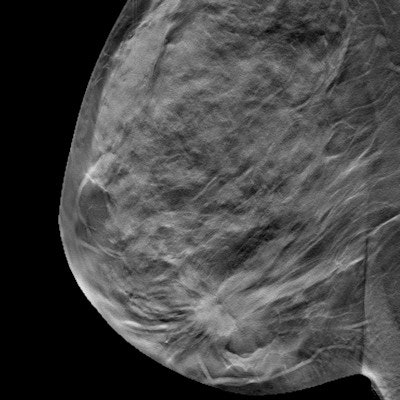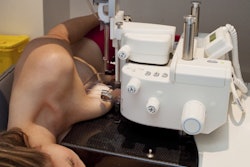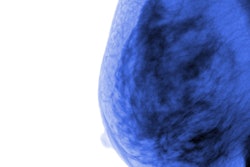
It's been more than 10 years since the U.S. Food and Drug Administration (FDA) cleared digital breast tomosynthesis (DBT) for marketing. But has DBT delivered on its much-anticipated promise? Experts weighed in on May 16 at the Society for Breast Imaging annual meeting in Savannah, GA.
Yes, DBT offers some benefit over digital mammography (DM) alone, said presenter Dr. Debra Monticciolo of Texas A&M University in Temple. But these benefits are specific to particular populations and care settings.
"Variation of application settings affects [DBT] outcomes," she told session attendees. "Prevalence versus incidence, biennial versus annual screening, high versus low recall rates, the age of patients, and breast density."
Monticciolo offered an overview of DBT's performance, then addressed hotly debated topics such as whether synthesized mammography (SM) images can replace digital mammography ones in tomosynthesis imaging and whether the interval cancer rate for DBT is an effective way to measure mortality rates.
Bird's eye view
How does digital mammography alone compare with digital mammography plus DBT -- which requires two radiation exposures? Paired studies have shown that DM plus DBT does find more cancers: 8.8 per 1,000 women compared with 6.4 per 1,000. But in unpaired studies, the difference is narrower, at 5.7 cancers detected per 1,000 women compared with 4.5, Monticciolo noted.
What about recall rates? The DM/DBT combination has a higher overall recall rate in paired studies compared with digital mammography alone: 4.1% versus 3.5%. But in unpaired studies, the DM/DBT combination produces fewer recalls compared with digital mammography alone: 8% versus 11.3%.
So what's the takeaway? The benefit of DM/DBT compared to digital mammography depends on the setting.
"The cancer detection rate improves most in the biennial screening setting, but is variable and lower in annual screening," Monticciolo said. "The recall rate improves where recall is highest, but is often still high, and there's no improvement seen in paired design studies."
How effective are synthetic mammography images?
In 2012, the FDA cleared the way for synthetic mammography images to be used in place of digital ones with DBT -- an action that appears to be good for women, since per-view DBT radiation doses are 23% to 38% higher than digital mammography, and using synthesized imaging saves an acquisition and thus a radiation dose.
But are synthesized images an effective alternative to digital mammography images? Clinical results testing the efficacy of synthesized mammography images with DBT have been mixed. The Norwegian randomized Digital Breast Tomosynthesis Trial in Bergen (TOBE) compared SM/DBT to DM alone, and it found that across a variety of measures, only SM/DBT's recall rate and positive biopsies of recalled patients (PPV1) showed better performance compared with DM alone.
| Comparison of digital mammography alone to SM/DBT (TOBE trial) | |||
| Measure | Digital mammography alone | SM/DBT | p-value |
| Recall rate | 4% | 3.1% | < 0.0001 |
| PPV1 | 15.2% | 21.4% | 0.011 |
Another study, the Screening with Tomosynthesis Or standard Mammography-2 (STORM-2) trial, compared digital mammography to DM/DBT to SM/DBT and found that the cancer detection rate was higher with either tomosynthesis technique versus digital alone, but the study results indicated that the two techniques were essentially equivalent, Monticciolo said.
| Cancer detection rate per 1,000 women by breast imaging technique (TOBE trial data) | |||
| Measure | Digital mammography (reference) | SM/DBT | DM/DBT |
| Overall | 6.3 | 8.8 (p-value, < 0.0001) | 8.5 (p-value, < 0.0001) |
| Women < 60 | 3.7 | 7 (p-value, < 0.0001) | 6.3 (p-value, < 0.0001) |
| Women 60 and older | 10.2 | 11.4 (p-value, 0.23) | 11.7 (p-value, 0.031) |
"SM/DBT outcomes are equivalent to DM/DBT -- although SM is an inferior image and DM has better resolution," Monticciolo said. "There's support for using either."
Does DBT reduce mortality?
Does tomosynthesis lead to a mortality benefit? A survey of eight studies conducted between 2016 and 2021 that explored whether DBT cut interval cancer rates compared with digital mammography alone found no statistically significant reduction, Monticciolo noted.
"DBT does not change interval cancer rates," she said. "[But] interval cancer is a rare event, and all studies are underpowered to see interval cancer rate changes."
A decade into its use, DBT's benefits may be more moderate than clinicians originally hoped, Monticciolo concluded.
"When it comes down to it, we all thought initially DBT would knock our socks off, but [the technology] is a closer cousin to digital mammography than we expected," she said.




















